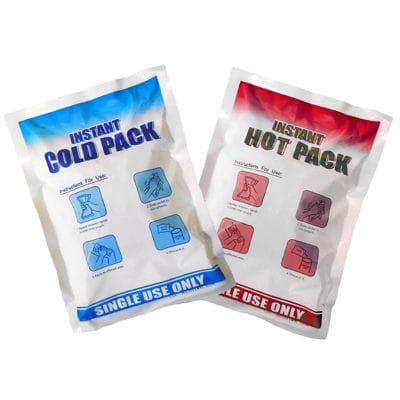Unveiling the Mystery: What’s Inside a Heat Pack?
Welcome, curious parents! If you’re on the hunt to demystify what makes heat packs such a comforting ally, you’ve come to the right place. Whether you’re warming chilly fingers on a frosty morning or soothing a little one’s tummy ache, understanding what’s inside those cozy companions can put your mind at ease. Let’s unwrap the layers of mystery and discover together what fills up these little packets of warmth.
The Basics: What Constitutes a Heat Pack?
At its core, a heat pack is designed to provide controlled, localized warmth. This warmth can ease muscle tension, reduce swelling, or simply offer comfort. But what’s the magic ingredient? While contents can vary by type, most heat packs contain materials like iron powder, activated charcoal, salt, water, and vermiculite. When exposed to air, these elements undergo a natural reaction that produces heat—a process called exothermic oxidation. But don’t worry, we’ll break down these components in layman’s terms, so you’ll know exactly what’s snuggling up against your kiddo’s skin.
Dissecting the Ingredients
- Iron Powder: The primary source of heat in disposable heat packs, iron powder rusts at an accelerated rate when exposed to oxygen, releasing heat in the process.
- Activated Charcoal: Acting as a dispersant, activated charcoal helps evenly distribute heat and prolong the warming effect.
- Salt: Ever the catalyst, salt aids in the iron oxidation process, ensuring a consistent and steady heat release.
- Water: The moisture in the pack is essential for the oxidation process to occur, kickstarting the reaction that brings the heat to life.
- Vermiculite: A natural mineral, vermiculite is excellent at retaining moisture and heat, contributing to longer-lasting warmth.
Types of Heat Packs for Your Consideration
As you venture into the world of heat packs, you’ll encounter various types, each with its own unique contents and benefits. Here’s a primer on what you’ll find:
Reusable Gel Packs
These packs are filled with a gel substance, typically a mix of sodium acetate and water. When activated, usually by flexing a metal disc inside, they provide instant heat and can be reused by boiling the pack to dissolve the crystals back to their original state.
Instant Heat Packs
Like their reusable siblings, these packs often contain a supersaturated solution of sodium acetate. However, they are single-use and activate differently, requiring you to break a barrier inside the pack to initiate the warming chemical reaction.
Microwavable Packs
For something a bit more natural, microwavable packs often include grains like rice, wheat, or flaxseeds, herbs, and sometimes essential oils. They are heated in your microwave for a set amount of time and can be reused many times over.
Self-Heating Packs with Minerals
Some heat packs take advantage of naturally occurring minerals like bentonite to produce heat. These typically require kneading or shaking to activate the heat-producing process.
In today’s world, safety is paramount, especially when it comes to our children. Understanding the contents of heat packs reassures us that while they bring warmth into our lives, they do so safely and effectively. Whether providing comfort for a sore muscle or offering some extra coziness during cold days, knowing what’s in these handy helpers keeps us informed and eases our concerns.
As you contemplate purchasing or using a heat pack for your family, rest assured that manufacturers adhere to strict guidelines to ensure that these products are safe and reliable. In the next section, we’ll delve into the safety features of heat packs, how to use them responsibly, and what to consider when choosing the best heat pack for your little one.
Stay tuned as we continue to shed light on the warm and comforting world of heat packs. Understanding these products is the first step in using them responsibly and with confidence for the benefit of your family’s well-being. Let’s set off on this journey of warmth and comfort!

5 Things Parents Should Know When Preparing a Heat Pack
Before you harness the cozy power of a heat pack for your family, here are five essential things you should keep in mind:
1. Understanding Activation Methods
Different types of heat packs have different activation methods. For those that require a microwave, it’s vital to follow the specified heating times to avoid overheating. For chemical packs, ensure you understand how to trigger the reaction safely. Always consult the instructions that come with your heat pack.
2. Testing Temperatures
Always test the temperature of the heat pack before applying it to your child’s skin. The pack should feel warm, not hot, to the touch. Avoid direct skin contact, especially with high-temperature packs or those that have been microwaved, to prevent burns. Using a cloth or towel around the pack is a good practice.
3. Monitoring Use
Never leave a heat pack on your child’s skin for an extended period. Follow the recommended duration of use, commonly 15-20 minutes, to prevent any risk of burns or skin irritation. Always supervise your child while they’re using a heat pack.
4. Checking for Leaks and Damage
Inspect the heat pack for any leaks, tears, or damage before every use. The contents of some heat packs, especially those with chemicals or natural grains, can be irritating if they come into contact with the skin or are ingested.
5. Storing Heat Packs Properly
Store your heat packs in a cool, dry place out of reach of children. For reusable packs, make sure to let them cool down completely before storing to maintain their longevity and ensure that they’re ready for their next use.
Heat packs can be a wonderful comfort for kids, alleviating pains and warming them up on a cold day. Yet, it’s critical for parents to understand their correct use, the contents within, and the precautions needed to ensure the safety of their loved ones. Following these guidelines will allow you to make the most out of this warming wonder without worry!
Knowing what’s in a heat pack, the types available, and the safety considerations will ensure that you choose the right heat pack for your family needs. Whether it’s easing discomfort or simply bringing a smile to a cold day, heat packs have proven to be a trusty solution in many a household. So next time you reach for that little pouch of warmth, you’ll be armed with the knowledge and assurance to use it effectively and responsibly. Enjoy the comfort and relaxation that a safe and well-prepared heat pack can offer to your children, making those cold days a little less daunting and much more delightful!
See more great Things to Do with Kids in New Zealand here. For more information see here
Disclaimer
The articles available via our website provide general information only and we strongly urge readers to exercise caution and conduct their own thorough research and fact-checking. The information presented should not be taken as absolute truth, and, to the maximum extent permitted by law, we will not be held liable for any inaccuracies or errors in the content. It is essential for individuals to independently verify and validate the information before making any decisions or taking any actions based on the articles.




